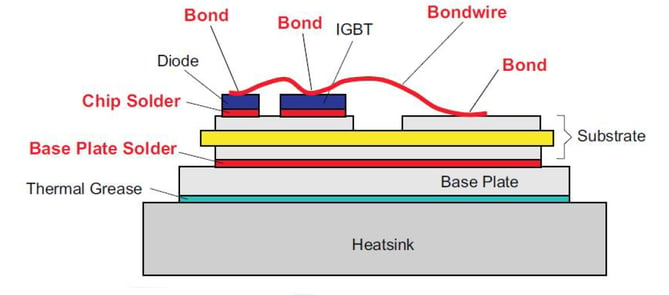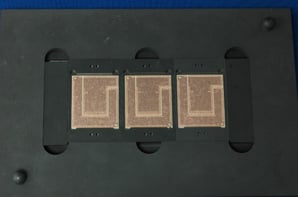Power Semiconductors have enjoyed steady growth for at least the last 15 years, with only the occasional down turn. It is expected that the global market will continue to drive more energy consumption (roughly 20TWh is currently used today). However, the market will push for energy savings through improved efficiencies and it will seek higher performances in power electronics.
Increased energy consumption worldwide means an increased need for power electronics devices to meet the requirements along the electrical energy supply chain, from generation to consumption. These devices are expected to be more efficient and to operate under more stressful conditions, such as higher temperatures, more power cycles, etc. This is particularly true for the automotive industry, as it transitions from the fossil fuel-powered engine to the electric vehicle.
Provided the drivers for growth of the HEV/EV market remain in place, there are tremendous opportunities ahead for power modules, including for auxiliary functions, and the necessary vehicle charging infrastructure. This growth should continue to be rapid, as evidenced by the investment into EV technologies in virtually every major car producing nation and by the major automotive manufacturers. To meet the requirements of the automotive industry, the semiconductors which populate these modules will need to endure higher operating temperatures and be reliable for a minimum of 15 years.
Rising demand for power modules does not depend strictly on the conversion of the passenger vehicle to the electric powertrain. There are also abundant opportunities in other areas such as elevators, motor converters, solar energy, welding, industrial frequency converters, pumps, large scale medical devices and so on. All these applications will benefit from increased efficiency.
Power Modules: Typical Failure Modes
For a conventional IGBT module, consisting of a stack-up of materials and interconnects, these interconnects within the package are the source of mechanical failures due to the thermal expansion mismatches that exist between the materials and components in the assembly. Typical failure modes include lift-off or the wire bond due to rapid power cycling or cracks in the solder due to temperature changes.
 Typical power module construction
Typical power module construction
Baseplate-to-DBC Solder Attach
An extremely challenging interconnect within the assembly operation and a source of yield loss for conventional reflow systems, often due to high void rates is the baseplate-to-DBC solder attach. Achievement of low cumulative voiding over the large surface area is difficult. If flux is used, this can exacerbate the voiding issue. Plus, with flux there is the added challenge and expense to ensure the flux residue has been cleaned from the product after reflow. The industry is actively seeking a reliable flux-free solder reflow process that achieves low void rates.
With decades of experience operating in high reliability microelectronics markets that demand a flux-free, low-void solder reflow process, Palomar Technologies is delivering similar to the power module industry with its SST Vacuum Reflow Systems.
.jpg?width=389&name=8301-Three%20Quarter%20View-With%20Glass-SST%20International-9248Final%20-cropped%20(2).jpg) SST 8301 Automated Vacuum Pressure Soldering System
SST 8301 Automated Vacuum Pressure Soldering System
The new 8300 Series Automated Vacuum Pressure Soldering System provides a highly reliable solder connection with a better than industry standard void rate – key to delivering high reliability power modules for automotive and commercial applications. SST Vacuum Reflow systems completed a case study to evaluate the flux-free soldering process for bare copper DBC substrate to Nickel plated copper base plate soldering using a SAC305 preform.
 Fixture with three bare CU Alumina DBC
Fixture with three bare CU Alumina DBC
Using SST’s unique void reduction reflow soldering technology and with the use of formic acid as a means for surface oxide removal, low voiding results (less than 1%) were demonstrated. The same technique can be applied for soldering of power dies (IGBTs, MOSFETs and Diodes) to DBC substrates with similar results.
To learn more, download the case study and data sheets:
| Extremely Low-Void, Lead-Free Solutions for Power Module Applications Case Study | SST 8301 Automated Vacuum Pressure System Data Sheet | SST 8303 Automated Vacuum Pressure System Data Sheet |
 |
 |
 |